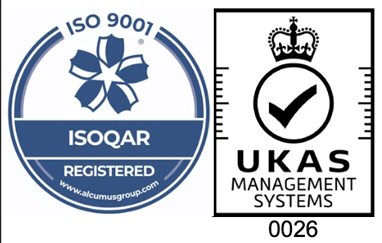How to Choose the Right Rubber Seal for Your Application
2nd May, 2025
Rubber seals are used across a variety of industries, including marine and industrial, as well as automotive, aerospace and engineering. Choosing the right rubber seal for your application is important to ensure maximum performance, but it doesn’t have to be difficult.
Rubber seals are used across a variety of industries, including marine and industrial, as well as automotive, aerospace and engineering. Choosing the right rubber seal for your application is important to ensure maximum performance, but it doesn’t have to be difficult.
This expert guide will assist you in selecting the best rubber seal for your application, considering different environments and needs, while exploring the important factors, like temperature resistance, chemical compatibility, pressure tolerance and material options.
What are rubber seals used for?
Rubber seals are an extremely popular choice when ensuring a watertight seal across a range of applications. Rubber seals ensure that, when the most suitable material is used and the seal is fitted to an application correctly, water and air do not escape or enter a space, which prevents the overall efficiency of a product.
There are multiple factors to consider when deciding which material is best for your rubber seal:
Temperature resistance
Rubber can withstand a range of extreme temperatures, making seals an ideal choice for use in environments where vast temperature changes are likely. Silicone is the most temperature resistant material, with an operating range from -100°C to 310°C, and is compatible with sterilisation techniques, including dry heat and gamma radiation. Even at low temperatures, rubber – especially silicone – has a high level of flexibility.
Chemical compatibility
When choosing material for your watertight seal and considering chemical compatibility, the first step is to understand what chemicals will be in use with your seal. This is crucial, because nobody wants any unnecessary chemical reactions. Harsh chemicals will cause most rubber materials to degrade, but nitrile works well with a broad range of chemicals, including acids and solvents, meaning it could be a suitable choice for your rubber seal which will be exposed to chemicals.
Pressure tolerance
Using rubber seals in an extremely high-pressure environment can cause damage or failure, regardless of the material selection. Avoiding exceeding the bearing range of the seal and avoiding temperature and pressure shocks will increase the lifetime of your rubber seal. Ethylene Propylene Diene Monomer (EPDM) is an extremely reliable material for use in rubber seals because of its low compression set, meaning EPDM won’t lose much resilience after prolonged pressure and it will return to its previous shape after the application of force.
All types of rubber have their advantages and disadvantages. There are several other materials which can be used in the manufacture of watertight seals for a range of applications, depending on the intended usage. Certain materials often meet at least one of the criteria – temperature resistant, chemically compatible and pressure tolerant – and there are other material options for you to choose from for your rubber seal.
For example, Viton can withstand temperatures ranging from -20°C to 250°C, neoprene is highly resistant to chemicals and natural rubber has great tensile strength so is pressure tolerant. Despite their advantageous properties, all rubber deteriorates as it nears the end of its lifespan, so regular checks to ensure everything is working correctly and replacing your rubber seals when they are damaged is vital.
Ready to choose the right rubber seal for your application?
At Aquaseal Rubber, we offer a range of materials for your watertight seal and our team are on hand to discuss your application’s specific needs. Contact us about your bespoke rubber seal today.


